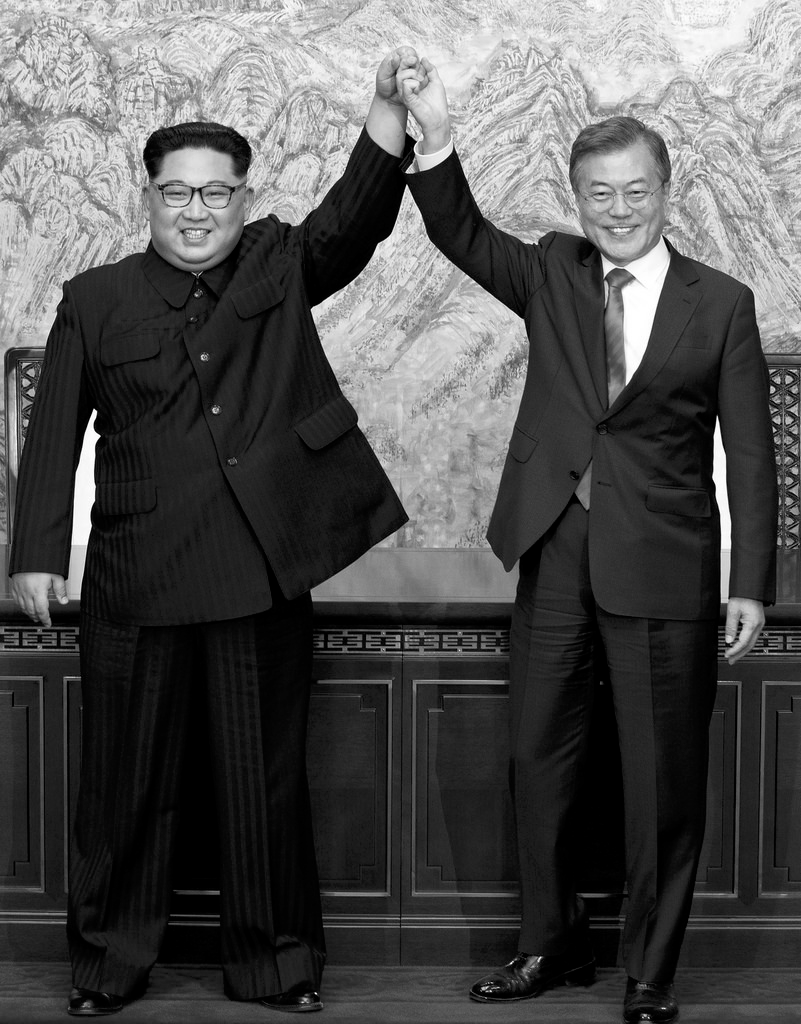On March 26, 2018, Kim Jong Un arrived in Beijing for a high-profile meeting with Chinese President Xi Jinping. Much of the expedition was shrouded in mystery, beginning with Kim’s arrival in a green bulletproof train resembling previous convoys that his father and grandfather used for foreign diplomatic missions from 1983 to 2011. The meeting marked Kim’s first trip outside of North Korea since his ascension to power in 2011.
Experts have speculated that Kim’s meeting with Xi was largely in preparation for the recent inter-Korean summit and the upcoming North Korea-U.S. summit. In an editorial for Foreign Affairs published on April 9, Oriana Skylar Mastro, an expert on Chinese state security at Georgetown University, claims, “For Beijing, the ultimate goal of the meeting was not to patch up the relationship with Pyongyang but to shape the direction of upcoming U.S.–North Korean talks and to ensure that any outcome favors Chinese interests over those of the United States.” In a March 28-31 discussion on China File, Michael Kovrig, an expert on North East Asia from the International Crisis Group, echoed convictions that China is seeking to increase its stake in the situation. He stated, “Xi seized the moment to reassert China’s pivotal role in managing Korean tensions. A brewing trade war with the U.S. probably also shaped his calculus. North Korea is far from being China’s puppet, but it is one of the few cards Beijing has to play in its intensifying strategic competition with Washington.” However, in the same China File discussion, International Political Economy Professor Zha DaoJiong of Peking University contends that the meeting will not affect China’s involvement in the matter, asserting that “Kim’s trip to Beijing may generate a couple of days of media interest. But in the end, it is not going to make much of a dent in the dynamics. The drivers of the train of geopolitics on the Korean peninsula continue to be Pyongyang, Seoul, and Washington.”
Others suggest that Kim’s appearance in the Chinese capital is evidence of an effort to patch up relations between the two countries. In an interview with Hankyoreh on March 28, Jin Jingyi, a Professor of Peking University and expert on Korean Peninsula affairs, weighed in by stating “North Korea-China relations are worse than they have ever been before. They had to improve at some point. This is also a time when North Korea and China need each other. ”
On April 27, following the diplomatic mission to China, Kim Jong Un and the President of South Korea, Moon Jae-in, convened a monumental inter-Korean summit in the border village of PanMunJeom. This landmark meeting was the first exchange between North and South Korean leaders in over eleven years, and also marked the first time that a North Korean leader stepped foot on South Korean soil since the Korean War.
The historic summit began with a picturesque handshake and the two leaders crossing over the border line to set foot on each of their respective countries. The summit’s agenda centered around producing an official agreement to end the Korean War, a peaceful transformation of the Demilitarized Zone (DMZ), and a complete denuclearization of the Korean peninsula. After discussion, the two sides agreed to push for further talks that will involve the United States, and most likely China as well, in order to help facilitate these aims.
As a result of negotiations, both Koreas have announced that they plan to ratify a formal peace treaty through each of their national legislatures within a year. This would be the first peace agreement signed since the 1953 armistice. Despite this breakthrough, there was little mention of reunification during the conference. The two countries have also agreed to suspend hostile military activities and move towards returning the DMZ back to “its original state” according to the Munhwa Ilbo newspaper. This could include connecting transportation infrastructure and designating the waters around the West Sea’s Northern Limit Line as a special peace zone. In addition, according to The Chosun Ilbo, the two countries have pledged to work on reuniting families, specifically choosing the date of August 15 which is Liberation Day, a commemoration of the victory over Japan in World War 2. Finally, an agreement has been made to work towards a complete denuclearization of the Korean peninsula, and North Korea has reportedly announced that it would halt nuclear weapons testing and that it had already closed down a nuclear weapons testing site.

In regards to the future of inter-Korean diplomacy, the two state leaders agreed that President Moon would visit Pyongyang in the fall, and that joint liaison offices would be established in PanMunJeom and the North Korea province of Kaesong. The summit also had a considerable impression amongst the South Korean public. According to a poll done by the Munhwa Broadcasting Company, seventy-eight % of South Koreans consider Kim Jong Un to be trustworthy following the summit. This is a considerable shift of public opinion from previous years.
On an international level, the neighbors of the Korean peninsula—China, Russia, and Japan—have all expressed positive receptions to the summit. However, there is some skepticism, especially on Japan’s part, that the accord was largely symbolic and the agreements were far too vague to amount to actual change. Analysts have also maintained that change will not occur without the United States’ approval. On a related note, President Donald Trump has enthusiastically extended his congratulations to the Koreas, and has continually gone so far as to take credit for the summits’ successes. On January 4, 2018 he tweeted, “With all of the failed “experts” weighing in, does anybody really believe that talks and dialogue would be going on between North and South Korea right now if I wasn’t firm, strong and willing to commit our total “might” against the North. Fools, but talks are a good thing!” Furthermore, on April 28, shortly after the Korean accord concluded, Trump tweeted, “KOREAN WAR TO END! The United States, and all of its GREAT people, should be very proud of what is now taking place in Korea!” suggesting that United States played a significant role in the discussions.
As of now, the US-North Korea summit has been set for for June 12 in Singapore. Mike Pompeo, the United States Secretary of State (following Rex Tillerson’s dismissal) has allegedly already made two trips to North Korea, on March 31 and May 8 respectively, in preparation for the upcoming meeting.
Simultaneously, Kim Jong Un recently completed a second trip to China, meeting with Xi Jinping on May 7-8 in the northeast city of Dalian. The two leaders likely discussed the results of the inter-Korean summit and possibly guidance around the imminent Kim-Trump encounter. According to CNN, President Xi is planning a trip to Pyongyang, and on May 8, Trump announced over Twitter that he had made a phone call to the Chinese head of state to discuss trade and North Korea.






